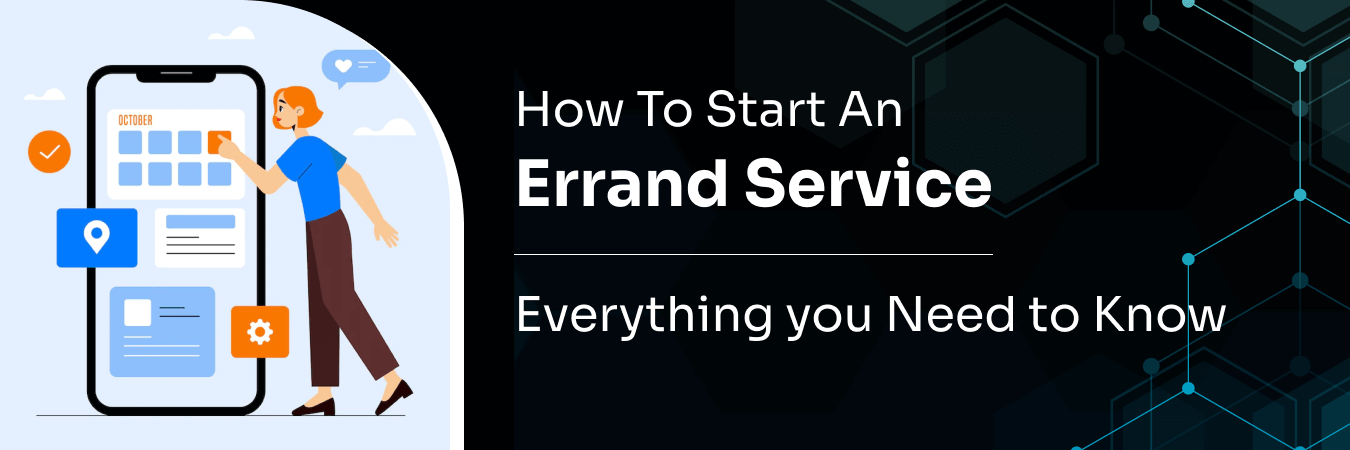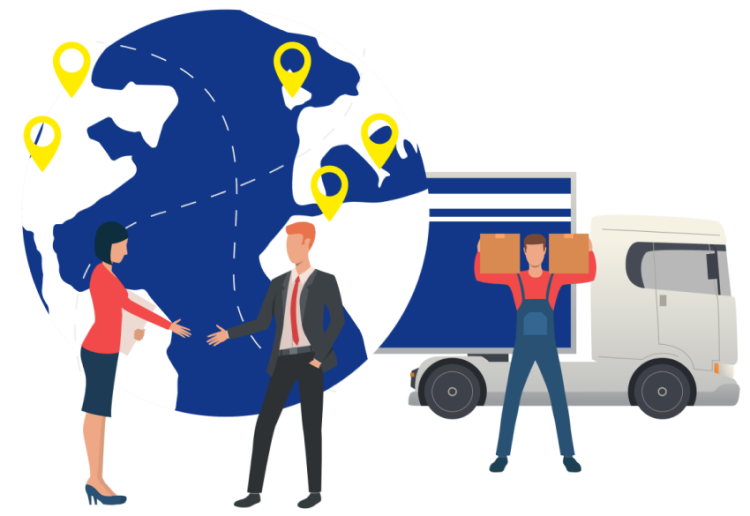Virtual assistants are changing the way businesses operate. Whether you’re a startup founder, busy entrepreneur, or growing enterprise, working with a virtual assistant can streamline operations and free up time to focus on growth. In this guide, you’ll learn exactly what a virtual assistant is, how they work, and how to make the most of hiring one.
Why Are Virtual Assistants Important?
Virtual assistants (VAs) help businesses save time, reduce costs, and increase productivity. Whether it’s managing your inbox or coordinating schedules, VAs take on routine tasks so you can focus on high-value activities.
- Increased productivity: Delegating recurring tasks to a VA gives you back valuable time.
- Cost efficiency: Hiring a VA is more affordable than an in-house employee.
- Scalability: VAs offer flexibility as your business grows.
What Do Virtual Assistants Do?
Virtual assistants (VAs) are versatile professionals who provide remote support across a wide range of business functions, helping companies save time, reduce costs, and improve efficiency. Whether you’re a startup, SME, or a growing enterprise, VAs can seamlessly integrate into your operations. Here’s a breakdown of how they can add value to your business:
Administrative Support:
- Inbox management and email filtering
- Calendar scheduling and appointment setting
- Data entry and database management
- Document preparation, formatting, and presentation creation
Marketing Tasks:
- Social media scheduling and basic content management
- Website updates and blog posting
- Basic SEO tasks and keyword research
- Assisting with email marketing campaigns and newsletters
Customer Service:
- Responding to customer inquiries via email, phone, or live chat
- Managing support tickets and ensuring timely resolutions
- Processing orders and handling customer follow-ups
- Providing multilingual support for global businesses
Finance Support:
- Invoice creation and processing
- Bookkeeping and expense tracking
- Payment reminders and follow-ups
- Basic financial reporting
Operations & Project Management:
- Coordinating with vendors and suppliers
- Managing logistics and order fulfillment
- Tracking project timelines and deliverables
- Preparing progress reports and status updates
Example: A marketing agency might hire a VA to schedule social media posts, organize campaign assets, manage client communications, and handle routine admin tasks—allowing the core team to focus on strategy and creative execution.
Whether you need daily administrative help, customer service coverage, or specialized support, Virtual assistants offer a flexible, cost-effective solution to keep your business running smoothly—without the overhead of traditional staffing.
How Do Virtual Assistants Work?
VAs typically operate remotely, using digital tools to collaborate with clients. Depending on your needs, you can hire:
- Freelance VAs: Work independently and may serve multiple clients.
- Agency-based VAs: Come with built-in support, quality control, and a resource manager
Communication & Collaboration
Effective communication and seamless collaboration are key to successful virtual staffing. At Errandables, we ensure that our virtual assistants stay connected and aligned with your team through reliable channels and tools designed for productivity and transparency.
- Channels used: Email, Slack, Zoom, Microsoft Teams
- Project tools: Trello, Asana, Monday.com, ClickUp
- Time tracking: Tools like Time Doctor, Hubstaff ensure accountability and transparency
Types of Virtual Assistants
Virtual assistants can either be generalists, handling a broad range of tasks, or specialists focused on specific industries or functions. Choosing the right type depends on your business needs and the level of support required.
Generalist Virtual Assistants
These VAs offer flexible support across multiple areas, ideal for businesses needing help with a variety of routine tasks.
Admin-Focused VAs
Perfect for managing everyday operations, they handle:
- Calendar and inbox management
- Data entry and document organization
- Scheduling meetings and coordinating appointments
Example: A small business owner might rely on an admin VA to manage emails, schedule client calls, and keep records updated—freeing up valuable time to focus on growth.
Personal VAs
These assistants bridge both personal and professional tasks, helping busy entrepreneurs stay organized.
- Travel bookings and itinerary management
- Personal errands (online purchases, reservations)
- Managing both business and personal calendars
Example: A consultant frequently traveling for work could use a personal VA to handle flight arrangements, hotel bookings, and appointment scheduling.
Executive Assistants
Tailored for senior leaders, Executive VAs provide high-level support by:
- Managing executive schedules and priorities
- Preparing presentations and reports
- Coordinating with internal teams and external partners
Example: A CEO might delegate meeting preparations, follow-ups, and task coordination to an Executive VA, ensuring focus stays on strategic decisions.
Industry-Specific Virtual Assistants
- Healthcare VAs: Handle appointment scheduling, billing support, and EHR updates.
- Legal VAs: Assist with legal research, case tracking, document prep.
- Real Estate VAs: Manage listings, schedule showings, coordinate with clients.
- E-commerce VAs: Inventory updates, product listings, customer service.
- Marketing VAs: Social media content, analytics reporting, campaign support.
- Finance VAs: Bookkeeping, reconciling statements, invoice tracking.
Why Hire a Virtual Assistant?
Every growing business reaches an inflection point where the founder’s time becomes the bottleneck. Virtual assistants solve this by acting as force multipliers – they handle the essential but time-consuming work that keeps your business running, while you focus on the strategic work that moves it forward.
The real power of a VA lies in their ability to:
- Extend your capacity without adding permanent overhead
- Specialize where you generalize by bringing niche skills
- Create leverage by handling tasks at a lower effective hourly rate
Some more benefits of hiring a virtual assistant are:
- Save on overhead: No office space, equipment, or employee benefits required.
- Focus on growth: Delegate low-impact tasks and invest time where it matters.
- Flexible staffing: Scale your team up or down based on workload.
How to Hire a Virtual Assistant
Hiring a virtual assistant doesn’t have to be complicated. Here’s a simple step-by-step guide to ensure you find the right fit for your business—efficiently and effectively.
1. Define Your Needs
Start by identifying the tasks you want to delegate:
- Are you overwhelmed by administrative work, customer service, or social media management?
- List daily, weekly, and monthly tasks that take up your time but don’t require your direct attention.
Example: If you’re spending hours managing emails and scheduling meetings, a VA can easily take over those tasks.
2. Choose the Right VA Type
Match your task list to the VA’s skills and experience. Do you need a generalist for admin support, or a specialist with marketing, finance, or industry-specific expertise?
Example: A law firm might seek a VA with legal administrative experience, while an eCommerce store could need someone skilled in order processing and customer service.
3. Select a Platform or Agency
Decide whether to hire through a freelance platform or a trusted agency like erandables. Consider factors like cost, vetting processes, ongoing support, and service quality. Agencies often provide added benefits like dedicated resource managers and backup support.
Example: Businesses looking for reliable, long-term support often prefer agencies to avoid the risks of hiring unvetted freelancers.
4. Interview Candidates
Don’t skip this step—cultural fit and communication are key.
- Ask about their experience with similar tasks or industries.
- Test their responsiveness, problem-solving skills, and ability to follow instructions.
Example: If hiring for customer service, present a mock scenario to see how they’d handle a client inquiry.
5. Onboard and Train
Set your virtual assistant (VA) up for success by providing the right resources, structured onboarding & training, and clear communication from the start. A well-prepared VA will be more efficient, independent, and aligned with your business goals.
Key steps:
- Provide access to necessary tools, clear SOPs (Standard Operating Procedures), and define expectations from day one.
- Schedule regular check-ins to ensure alignment and productivity.
Example: Use tools like Slack for daily communication, Trello for task management, and Time Doctor for tracking work hours.
By following these steps, you’ll ensure a smooth hiring process and get the most value from your virtual assistant—helping your business run smarter and more efficiently.
Would you like to simplify the process even further?
Where to Find a Virtual Assistant
There are several ways to hire a virtual assistant, each with its own benefits depending on your business needs, budget, and expectations. Here’s a breakdown of the most common options:
1. Freelance Platforms
Websites like Upwork, Fiverr, and Freelancer offer access to thousands of VAs across the globe.
- Ideal for short-term projects or businesses looking for flexible, task-based support.
- You manage the hiring, training, and oversight directly.
Pros:
- Flexible pricing options
- Wide talent pool
- Faster onboarding for simple tasks
Cons:
- Varying quality and reliability
- No guaranteed backup if a freelancer becomes unavailable
- Time-consuming vetting process
Example: A startup needing occasional graphic design or data entry might opt for a freelancer on Upwork for quick, one-off tasks.
2. Virtual Assistant Agencies
Agencies like erandables provide pre-vetted, trained virtual assistants along with dedicated support.
- Best for businesses seeking long-term, consistent, and scalable support without the hassle of managing everything themselves.
Pros:
- Quality control and vetted professionals
- Dedicated resource managers for smooth coordination
- Backup resources to ensure continuity
- Structured onboarding and ongoing support
Cons:
- Higher upfront cost compared to freelancers (but often more value in the long run)
- Less flexibility for very short-term, one-off task.
Example: A growing eCommerce business needing ongoing customer service, admin support, and project management would benefit from an agency’s reliability and scalability.
3. Professional Networks
Platforms like LinkedIn, industry forums, or personal referrals can connect you with independent VAs.
- Ideal if you prefer hiring through trusted recommendations or want to build a direct working relationship.
Pros:
- Trusted through referrals
- Potential for long-term partnerships
- Negotiable terms
Cons:
- Limited pool compared to platforms/agencies
- You handle all vetting, contracts, and management
- No backup if issues arise
Example: A consultant might hire a VA recommended by a peer for personalized executive assistance.
Quick Comparison Table:
| Option |
Pros |
Cons |
| Freelance Platforms |
Flexible pricing, fast onboarding |
Inconsistent quality, no backup |
| VA Agencies |
Quality control, support, backups |
Higher upfront costs |
| Professional Networks |
Trusted referrals, direct hire |
Limited options, self-managed |
Choosing the right option depends on your goals—whether you need quick, task-based help or a reliable partner to support your business growth.
How Much Do Virtual Assistants Cost?
Virtual assistant pricing isn’t one-size-fits-all—it’s shaped by three key factors:
- Skill level (General admin vs. specialized expertise)
- Location (Philippines vs. North America vs. Eastern Europe)
- Engagement model (Hourly, retainer, or project-based)
Common Mistakes to Avoid When Hiring a Virtual Assistant
Hiring a virtual assistant can be a game-changer for your business, but overlooking key steps can lead to inefficiencies and missed expectations. Here are some common mistakes to watch out for—and how to avoid them:
1. Not Defining the Role Clearly
Without a clear understanding of what tasks you want to delegate, VAs can’t perform effectively. Ambiguity leads to confusion and unmet expectations.
Solution: Outline specific responsibilities, required skills, working hours, and preferred tools before starting the hiring process.
2. Hiring Based on Cost Alone
While cost-saving is a major benefit of virtual assistants, focusing only on the lowest price can compromise quality, reliability, and professionalism.
Solution: Balance affordability with experience, skill set, and proven performance. A qualified VA will deliver better value over time.
3. Failing to Provide Onboarding or Training
Even experienced VAs need guidance on your unique processes, tools, and preferences. Skipping onboarding results in delays and errors.
Solution: Provide clear instructions, access to resources, and a structured onboarding process to ensure smooth integration.
4. Poor Communication or Inconsistent Check-Ins
Lack of regular communication can cause tasks to go off-track or important updates to be missed.
Solution: Establish consistent communication channels and set regular check-ins to stay aligned on priorities and progress.
5. No Performance Tracking
Without tracking performance, it’s difficult to measure productivity or identify areas for improvement.
Solution: Use project management and time-tracking tools, and set clear KPIs to monitor progress and maintain accountability.
By avoiding these common mistakes, you can build a productive, long-term partnership with your virtual assistant—maximizing efficiency and business growth.
How to Manage a Virtual Assistant
Effective management is key to getting the most value from your virtual assistant. A well-managed VA can significantly improve productivity, but without proper structure, even the best talent can underperform. Here’s how to ensure a smooth and efficient working relationship:
1. Communicate Often
Regular communication keeps tasks on track and prevents misunderstandings. Without face-to-face interaction, staying connected is essential.
Tip: Schedule daily or weekly check-ins via Slack, Zoom, or email to discuss priorities, progress, and any challenges.
2. Use Task Management Tools
Organizing tasks in one place ensures visibility and accountability. Tools like Trello, Asana, or Notion help both you and your VA stay aligned on deadlines and deliverables.
Example: Set up a shared project board where tasks are assigned, tracked, and updated in real-time.
3. Define KPIs
Clear performance metrics help measure productivity and ensure expectations are met. Without KPIs, it’s difficult to assess if your VA is adding value.
Tip: Track key outputs such as task completion rates, adherence to deadlines, response times, and overall task quality.
4. Create Standard Operating Procedures (SOPs)
SOPs provide clear guidelines for recurring tasks, reducing errors and saving time. They help your VA work independently with confidence.
Example: Document processes for tasks like inbox management, customer responses, or report generation to ensure consistency.
5. Offer Regular Feedback
Continuous feedback keeps performance aligned with your expectations and encourages improvement.
Tip: Schedule monthly reviews to discuss what’s working, areas for growth, and to recognize achievements, motivating your VA to stay engaged.
By implementing these practices, you’ll foster a productive, efficient, and long-term partnership with your virtual assistant, ensuring they contribute effectively to your business goals.
Conclusion
VAs help you work smarter—not harder, while cutting costs and boosting productivity. Whether you’re just starting out or scaling fast, hiring a virtual assistant can transform your business, offering the flexibility and efficiency modern businesses need.















